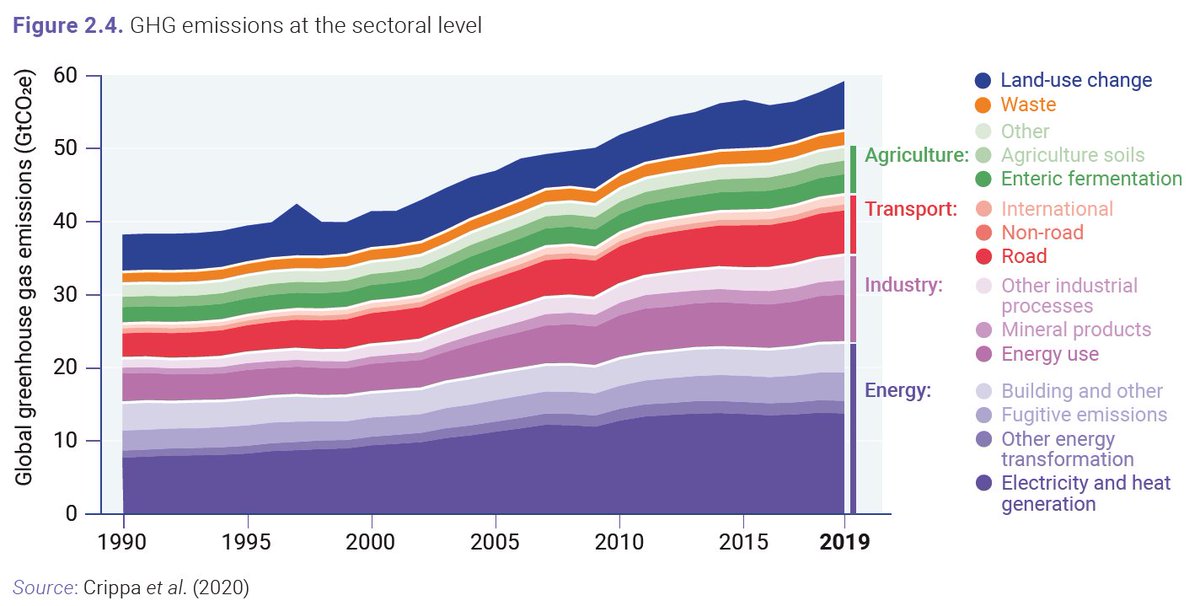Where do most GHG emissions come from?
~34% Energy transformation (electricity/heat 24%, fugitive 10%)
~26% Agriculture & waste (15%) & LUC (11%)
~20% Industry (energy use 11%, process 9%)
~14% Transport
~6% Direct energy use in buildings, commercial, ...
https://www.unenvironment.org/emissions-gap-report-2020
~34% Energy transformation (electricity/heat 24%, fugitive 10%)
~26% Agriculture & waste (15%) & LUC (11%)
~20% Industry (energy use 11%, process 9%)
~14% Transport
~6% Direct energy use in buildings, commercial, ...
https://www.unenvironment.org/emissions-gap-report-2020
Sector distributions are ambiguous as there are different way to do it. The above figure shows 𝘄𝗵𝗲𝗿𝗲 𝘁𝗵𝗲 𝗲𝗺𝗶𝘀𝘀𝗶𝗼𝗻𝘀 𝗼𝗰𝗰𝘂𝗿. If a power plant emits GHG, the emissions are allocated to the power plant, even if the electricity was used in steel making for a car.
The emission allocation depends on who you want to give agency to reduce them. It is possible to allocate all emissions to people. But, if most emissions come from coal power production, then people have less agency to mitigate them.
My view is that the primary allocation should be to where emissions occur (this is also how they are estimated, reported, & mitigated). Alternative allocations are necessary & complementary, but also depend on the existence of the primary allocation.
/end
/end

 Read on Twitter
Read on Twitter


